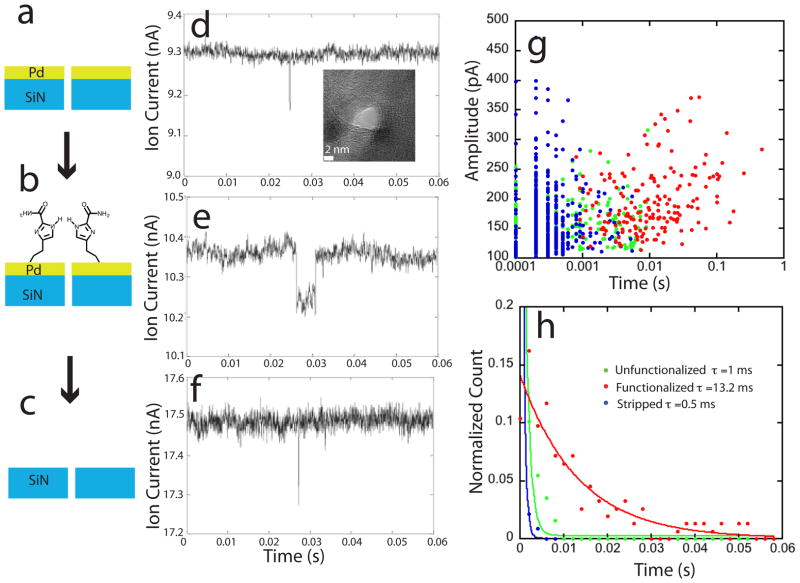Figure 2.
Functionalizing a pore with a recognition molecule slows translocation: Translocation times for a 63 nt ssDNA were measured for a 4 nm diameter pore (inset in e) drilled into a 10 nm Pd film on top of an 18 nm SiN support (a), then when functionalized with 4(5)-(2-mercaptoethyl)-1H-imidazole-2-carboxamide (ICA – Figure 1) (b), and then again with the metal and functionalization removed (c). Examples of current blockades (at 50 mV bias) for the three cases are shown in d, e and f. The rise in background current in g is largely accounted for by the reduction in pore thickness. A scatter plot of the amplitude of the blockade vs. the log of the blockade times (g) shows that amplitudes are all quite similar, but the blockade times include many much longer events for the case of the functionalized pore (discrete values at small times reflect sampling). The blockade times (shown here for 70 mV bias, 1M KCl plus 1 mM phosphate buffer, pH 7.0) are approximately exponentially distributed (h) with 1/e times only a little longer than the instrumental limit for the metalized (green dots, N=321) and stripped pore (blue dots, N=464) but which approach 0.2 ms/nucleotide when the pore is functionalized (red dots, N=171).

